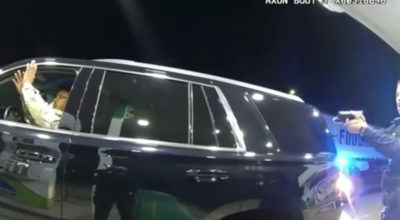

Hamilton County government, and counties across Tennessee, have thrown themselves wholeheartedly into an experimental vaccine program that would have been prohibited by state law — if only they had obeyed the law and not put the health, safety and welfare of their residents in jeopardy.
By David Tulis / NoogaRadio 92.7 FM
They are operating a fraud by violating Tenn. Code An. § Title 68-5-104, the primary law dealing with quarantines and epidemics. I have been in court nearly 200 days to get a writ to command them to obey the law — and thus end their dangerous and now lethal mitigation programs for CV-19, or Covid-19, a set of flulike symptoms that has not yet been isolated. No one in the state has made a determination as to the cause or agent of contagion of the condition.
The fraud has prevented real mitigation, and proper, focused isolation of the sick and care for their condition. Chancery court is an enemy of fraud by design and intent. But unjust judge Pamela Fleenor has refused to act swiftly as the mandamus law requires to restore equity and compel obedience to the law.
Chancellor Henry R. Gibson in his famous book, Gibson’s Suits in Chancery, explains the wiles of fraud in the 1907 edition of his two-volume book online.
‘Shapes, disguises, subterfuges’
§ 448. Fraud Proved by Circumstances. — Fraud is seldom established by direct and positive proof, and such proof is not necessary. Generally, the first effort of a man, who intends to commit a fraud, is to throw a veil over the transaction, to conceal it from discovery, to baffle all attempts at detection, and to shield it against attack. No man willingly furnishes the proof of his own turpitude. Fraud is, for this reason, rarely perpetrated openly and in broad daylight. It is committed in secret, and is usually hedged about by every guard that can be devised to prevent its discovery and exposure.
Its path is crooked and circuitous, its footprints are carefully covered up, the signs of its operations are diligently removed, or attempted to be removed, and the mask of honesty and good faith is put over the face of the real transaction.
For these reasons, fraud is usually proved by circumstantial evidence.00 In consequence of the abhorrence with which fraud is regarded by Courts of Conscience, in consequence of the heinousness of the offence, and, in consequence of the artifices, devices and coverings used to conceal it, and to baffle detection, a wide range of evidence is allowed in proving its existence; and Courts of Equity do not restrict themselves by the same rigid rules that Courts of law do, in the investigation of fraud, and in the evidence and proofs required to establish it.
Fraud assumes many shapes, disguises and subterfuges, and is generally so secretly hatched that it can only be detected by a consideration of facts and circumstances, which are frequently trivial, remote and disconnected, and which cannot be interpreted without bringing them together, and contemplating them all in one view. In order to do this it is necessary to pick one fact or circumstance here, another there, and a third yonder, until the collection is complete. Each detached piece of evidence is not, therefore, to be rejected when offered, because apparently trivial. A wide latitude of evidence is allowed; and if a fact or circumstance relates directly, or indirectly, to the transaction, it is admissible, however weak or slight it may be, its relevance depending, not upon its weight or force, but upon its bearing or tendency.
Issues of fact in civil cases are determined by a preponderance of testimony and the rule applies as well to cases in which fraud is imputed as to any other and if the evidence is of sufficient force to produce a preponderance of assent in favor of the allegation of fraud, that is all that the law requires, and the fraud will be deemed proved, although there be some doubt of its existence. The Court of Chancery is the arch enemy of fraud; and to that Court those who are the victims of bad faith generally apply for redress, not only because the Chancery Court can grant more perfect relief, but, also, . because it will often grant that relief upon weaker presumptive evidence than will a Court of law.
Where the Court can pronounce a decree that will place each of the parties in substantially as good a condition as they were in respectively at the time the alleged fraud was committed, it will act upon less evidence than would ordinarily be required to support a verdict.



Years ago the movie Idiocracy was released that has a following to this day. While I have not seen it, we are all seeing it lived out in reality today.
What does it take to make what would otherwise be a rational person to wear the personal cage seen in the photo? Perhaps a society that obeys institutional leadership that has lied to them all their lives.
Is there a word for that? Yes, it is “FRAUD”.
The entirety of “corporate government” is a FRAUD.